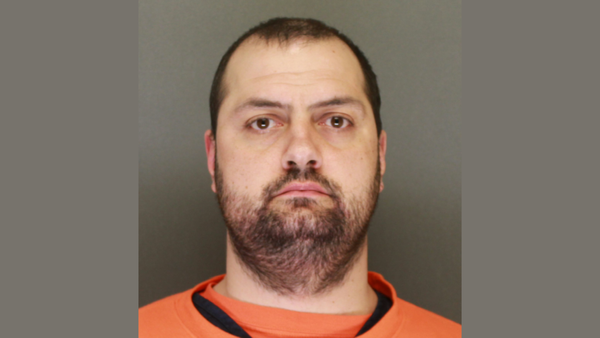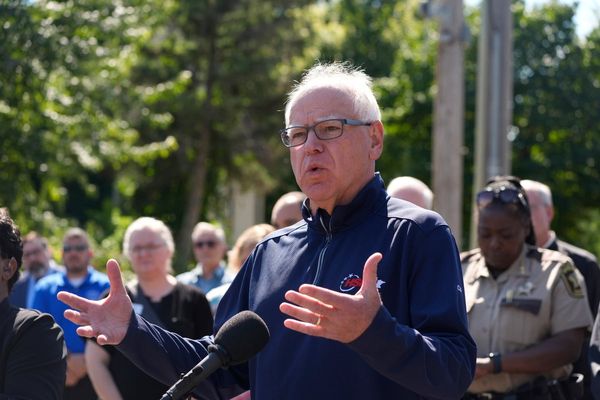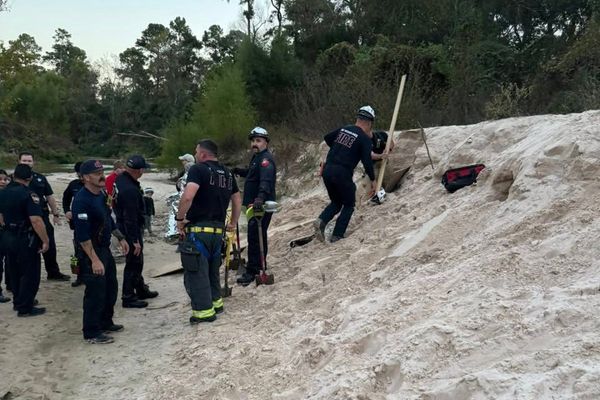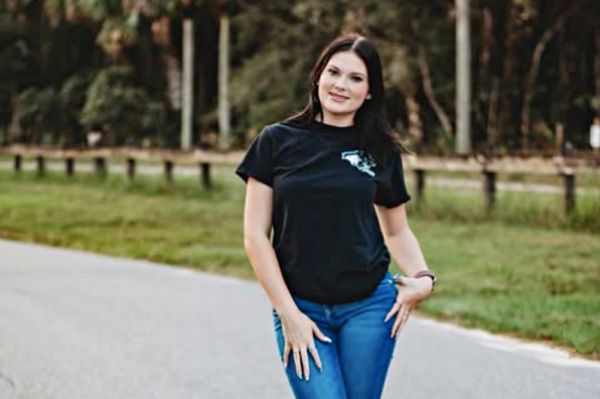In a video posted to the Survival Sisters Facebook page, a little elementary school-age girl with immaculate braids and a blue T-shirt grips a machine gun, squinting into the sight.
The automatic weapon is huge in her tiny hands, but she holds it expertly, even if she has to balance it on a block of wood. As the video continues, she pulls back her finger and fires a practice shot. Music taken from the movie 300 swells in the background.
Cut to a higher-definition clip, taken years later. That little girl is now a young teen, with her hair pulled back into a ponytail. She stands confidently with her weapon, her yellow ear defenders and safety glasses matching a yellow shirt with flowers on it, and pumps round after round of ammo into an open field.
The huge bullets fly past the camera, one after the other. At one point, her father steps in behind her to gently steady her with a hand on her back. Once she’s finished with the round, she reloads and immediately starts again.
The video is titled, “The evolution of Naomi,” and it features one of the four Thrasher daughters — Naomi, Kennedy, Brooke and Charli — all of whom have spent their lives around guns. Now in their late teens and early 20s, the Thrashers started learning about firearms before they hit kindergarten.
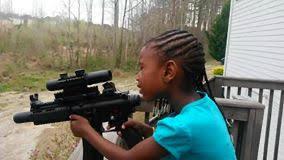
At 4 years old, they accompanied their father, Fred, to the local range, and he explained gun safety to them while shooting. Once they showed that they understood the basics, he tried them out with “little bitty guns,” he tells me — 22. caliber handguns — and then they moved on to semi-automatics, AR-15s, military-grade weaponry; they’ve even driven tanks.
And they did it in front of a camera, with their father posting regular updates to their Facebook and Instagram pages, where they have a combined follower count of just under half a million.
Not everyone was happy to see four young Black girls on a shooting range when they first started out, Fred Thrasher tells me.
There were a “bunch of older white men” who took offense to seeing his kindergarten-age kids learning about gun safety while their father demonstrated with real firearms. Some of those white men approached him and said: “I’m going to call the NRA on you, because you shouldn’t be teaching that.” Some of them made aggressive comments directly to his daughters, telling them they were going to “make them eat dirt”.
Thrasher took a sanguine approach. “You should call the NRA,” he says he responded. “I don’t have to have a certification to teach my children a fact. Call whoever you want to call, because the NRA don’t regulate me… But it’s not even that you want it to be regulated. You just don’t want me doing it with my children, because they mess with your reality.”
He has a point. Despite the way they’re often portrayed in mainstream media, American gun owners aren’t who you think anymore.
While familiar narratives in both Hollywood and Washington, D.C., still focus on the white, rural man, gun ownership has become increasingly diverse. In recent years, Black gun ownership in particular has spiked, with a 58-percent increase in 2020 alone, according to the firearm industry trade association NSSF.
That trend has continued upwards over the five years that followed, with Black women in particular showing an interest in buying a firearm for the first time. Hispanic Americans, too, have become first-time gun owners at record rates. Polls show that interest in gun ownership from Jewish Americans has also been rising since 2023; national gun clubs have been reporting an influx of female and LGBTQ members.
These numbers have been attributed to a number of factors: a rise in racism following the Black Lives Matter protests, a rise in antisemitism since the beginning of the war in Gaza, a rise in misogyny and transphobia after the re-election of Donald Trump. But they also correlate with a push by gun manufacturers to advertise to diverse groups, according to the nonprofit Violence Policy Center.
Advertising since 2020 has spotlighted racially diverse gun owners and women, with dark warnings about the importance of protecting oneself from a radicalized populace. And all the while, marketing presentations at industry-only events have presented “diversity” as “the next big opportunity” for gun manufacturers, with the hope of creating “new Second Amendment advocates” out of groups who historically might have been pro-gun rights and anti-guns in general.
True figures on how many gun owners there are in the U.S. are surprisingly hard to come by. This is partly because the people who do the estimating — whether it’s gun lobbyists like the National Rifle Association (NRA) or groups advocating for stricter gun control — are usually biased one way or another.
There are just under 6.1 million registered guns in the country, although it’s impossible to know how many unregistered firearms there are — and there are a number of people who own multiple guns, as well as a large number who own none. Best estimates suggest that around 83 million people own at least one firearm. About 40 percent of American adults say they live in a household with a gun, according to the nonpartisan Pew Research Center.
But concerningly, the reason why gun owners say they have firearms has changed dramatically over the past 25 years. In 2000, over half of gun owners said that they have a firearm for hunting or sport, with just 26 percent reporting they owned one for “protection”. By 2013, that number had swung the other way, with just under half of people reporting that personal protection was their main reason for owning a gun. Ten years later, in 2023, the number of people who said they have a gun for protection had jumped again to 72 percent. These statistics correlate with a culture in which politics has become increasingly divisive, and suspicion and fear has become an increasingly common marketing tactic among firearms manufacturers.
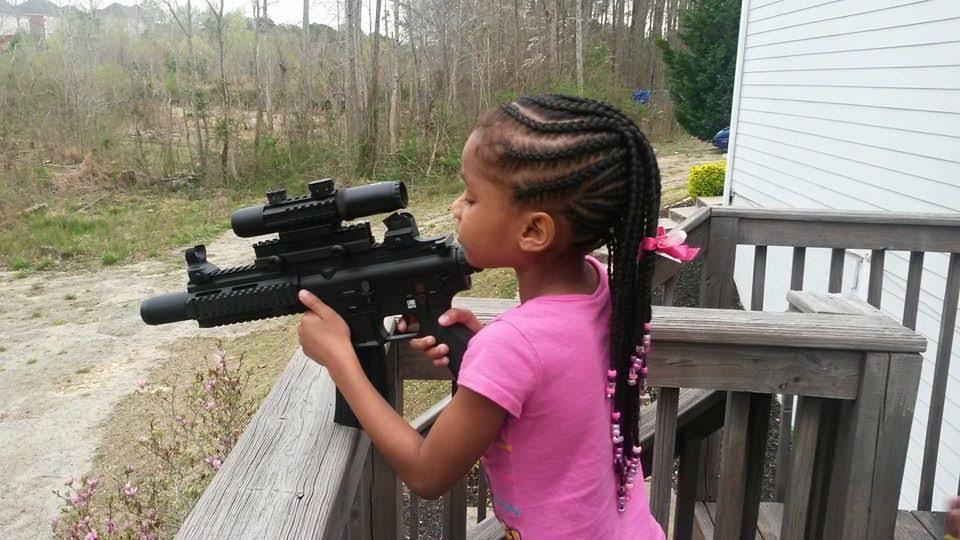
Like with any other social media partnership, gun influencers are often offered exclusive access to free and updated wares by gun manufacturers. When Fred Thrasher started the Survival Sisters pages seven years ago, it seemed like Black families wouldn’t get the same treatment. But as time went on, he says, things changed.
“Manufacturers, they send us equipment now. They send us stuff to test,” he says.
But it has to be “cool stuff,” he adds, because his daughters are seasoned pros now. They want specially modified equipment and interesting tools. They aren’t going to be tempted by just another, standard automatic weapon. “My one daughter, Kennedy, if it's not a custom rifle — I don't mean custom like people put some paint on it; I'm talking about it's a precision rifle — she doesn't care to shoot it. Because it's like: It don’t meet my standard.”
The first machine gun shoot that Thrasher took his children to was an invite-only event run by the influencer Iraqveteran8888, otherwise known as Eric Blandford, a wildly successful YouTuber in the firearms space with over 2.8 million followers. Blandford — who fits the standard gun owner profile in people’s minds, as a middle-aged white man and a veteran who poses in camo-patterned tactical gear and lives in the country — “believes that all gun laws are infringements,” according to his own website. At the machine gun event he ran, the Thrasher family made a big splash.
“You have these little girls — at the time, they were probably, what, eight or nine? They were little bitty girls,” says Fred Thrasher. “But they were handling these things, and they were not gangsters. They were not thugs. These were girls with big ponytails, handling these weapons in a safe fashion that impressed people. Because we have friends that have been in the military special forces, and their sons don't do it, but these little girls are doing this.”
It wasn’t just their fellow enthusiasts who were interested. While they were there, Fred and his daughters were also approached by firearms manufacturer Daniel Defense, and featured in some of their marketing copy.
“After they kind of spotlighted for Daniel Defense, people were like: The doors are open, you go ahead and do it,” Thrasher says. “And ever since then, it's just been one of those things where we have traveled around this great southeastern part of this country, just letting them shoot machine guns and dealing with other influencers.”
In the video of Naomi that shows her evolution from youngster balancing a gun on a tripod to confident teen, she’s shown shooting the Daniel Defense MK18 AR-15. It is a powerful and confronting image.
For some, Daniel Defense is a manufacturer that pushes boundaries in a tongue-in-cheek way and markets innovative new inventory, all while empowering gun owners by pushing against punitive laws.
For others — like Nicole Hockley, co-founder and CEO of Sandy Hook Promise, an initiative founded by families affected by the 2012 school shooting — it is “one of the worst manufacturers” out there, at least in terms of advertisements. One recent ad featured a rooftop sniper in an urban environment. Another, released in the immediate aftermath of the Sandy Hook shooting, depicted a toddler holding an AR-15 assault weapon, alongside the words: “Train up a child in the way he should go”.
Despite the fact that Sandy Hook Promise advocates for gun violence prevention, it is a nonpartisan organization. And Hockley says that a lot of the conversations they have with politicians — both Republican and Democrat — behind the scenes are positive. This isn’t just a job for her; it’s a personal mission. In 2012, her six-year-old son Dylan was shot and killed in his first-grade classroom by a 20-year-old wielding a semi-automatic, AR-15 style firearm. The gun had been legally purchased by his mother.

Gun violence is now the leading cause of death for children and adolescents in the United States. Sandy Hook Promise’s “UnTargeting” campaign calls out the firearms industry for deliberately marketing guns to children — usually young men — through video game-style ads that sell an image of power, control, and identity. It’s part of a broader gun control movement in the U.S. that seeks reforms like universal background checks, red flag laws, assault weapons bans, and restrictions on firearm advertising.
Advocates argue that America’s gun violence crisis — including frequent school shootings, with 23 having occurred so far in this year alone — stems not only from easy access to weapons but also from a culture that glamorizes them. In countries like the UK, Japan, and Australia, where gun ownership is far more restricted, mass shootings are vanishingly rare, and rates of gun deaths are a fraction of what they are in the U.S. The American gun homicide rate is more than 26 times higher than that of other high-income nations.
It’s important to bear in mind, too, that while the U.S. does have an extremely high rate of civilian gun ownership relative to other countries, what sets it apart isn't just the number of guns — it's the frequency of gun violence, especially when it comes to mass shootings. Countries like Switzerland and Canada also have significant levels of gun ownership per capita, but they don’t experience mass shootings at anywhere near the same scale.
Research shows that the “good guy with a gun” narrative — often used to justify widespread firearm access — rarely plays out in real-life active shooter events, and that countries with tighter laws and different gun cultures simply don’t need armed civilians to stay safe.
And even though the Second Amendment creates a lot of partisan conversations in politics, the data shows the vast majority of Americans — including most gun owners — support better background checks when people buy firearms. In the U.S., it seems, loose laws, aggressive advertising, and political inaction have created a uniquely deadly environment. And most Americans don’t like that.
Kids with pink guns
Fred Thrasher doesn’t see his children as social media content creators, even if they run in those circles. “They’re not influencers,” he says, firmly. “We’re a foundation.”
The Survival Sisters Foundation is a nonprofit organization that takes families out in rural Georgia and allows them to learn about firearms while using expensive gear they wouldn’t otherwise be able to access. It’s targeted in particular toward girls and women, and runs a campaign called “Don’t Be A Victim” that focuses on preventing domestic violence, child abuse, human trafficking and — perhaps counterintuitively — school shootings.
Still, child gun influencers have been becoming more common over the past five years.
Pink-haired 12-year-old Autumn Fry is one such example: in 2022, aged eight, she posed in RECOIL magazine, clutching a customized assault rifle painted in pink tiger-print, and detailed how she’d first put her finger on the trigger of an automatic weapon with her father on the gun range when she was two years old.
Cheyenne Dalton is now 24 years old but has been a content creator in the firearms space since she was 14; at 17, she was already the subject of media profiles. She now promotes apple cider vinegar capsules on social media alongside semi-automatic weapons and her own branded merchandise.
The 2A Boys are young brothers whose father uploads content of them clutching very large guns, sometimes military-grade. A recent video features their youngest sister, who looks to be three or four years old, being given a handgun by her father and talked through how to handle it as she sports pink ear defenders and points out her pink camo gun range bag, which she was given for Easter. The comments are universally approving: “Six feet, 230lbs and I'm holding back tears, man,” writes one. “She's so cute, small and precious, makes me wish I had children. This is what life in our country should be.”
All of the above-mentioned influencers are white (The Independent reached out to each one for comment, but none replied.)
Thrasher says that he has to take a more careful approach, balancing his enthusiasm for the space with how he knows American society views Black people. He takes care to make sure that the content the family puts out on social media is positive, that it could never be mistaken for gang content.
That’s one of the reasons, he says, why the logo of the Survival Sisters is still a little girl with a ponytail and a flower, even though his girls are teens and young adults now, with the oldest two heading off to college and the youngest in high school. “Countering the narrative” is always top of mind.
Thrasher didn’t start shooting with his daughters to get clicks, anyway, he adds. He did it because, after he and his wife divorced, he realized he needed a way to bond with his children, and he was raised as a “country boy,” hunting, shooting, fishing and simulating river rescues. Traditionally, he’d been told that that was the purview of little boys. But why shouldn’t it be a way for a father to bond with his four little girls?
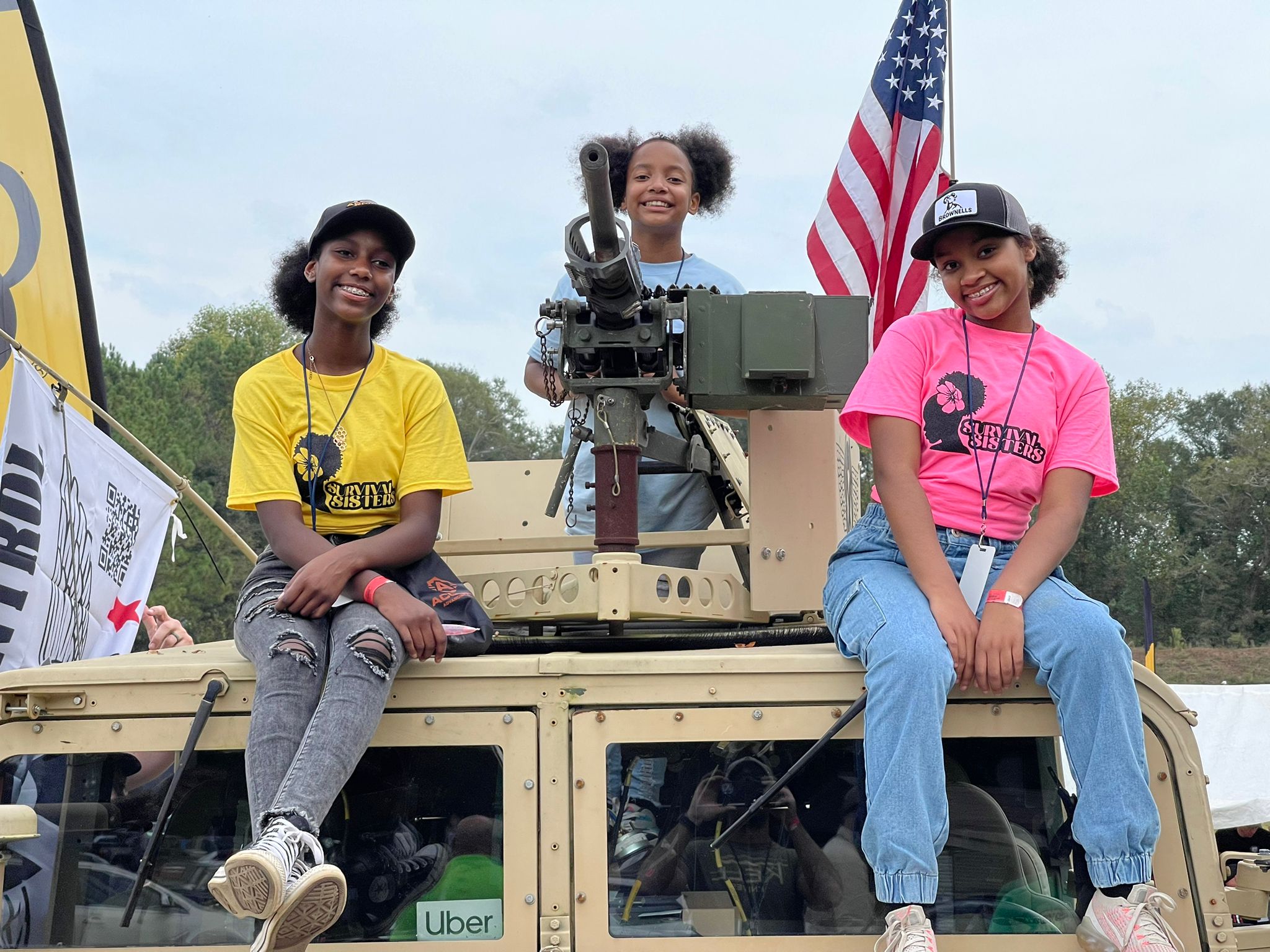
An AR-15 in your book bag
Despite the fact that the gun ownership demographic is changing and manufacturers are proactively reaching out to Black communities, Thrasher remains grimly realistic. He has counseled his daughters not to carry firearms on their person, even though they will soon be old enough to apply for a license to do so.
Firearms should be used for self-protection in one’s own home, locked in a safe, he says. He doesn’t want to imagine what might happen if one of his girls was driving home, got pulled over by a cop, and then the cop found a legally owned gun in her car.
But gun laws are lax where the family lives in Atlanta, Georgia, and some parents take their responsibility a lot less seriously than he does. An experience that Thrasher’s 18-year-old daughter had at a party underlines that.
“She said: Dad, I went to a party with one of my friends. And she said every little boy in there had an AR-15 pistol in his book bag,” he tells me. “She said: I had to leave. And so I said, well, why did you have to leave? She said: I know that they don't know anything about firearms, because who keeps firearms like that? Because in her mind, most firearms are kept in cases.”
When they’re on the range or at private shooting events, the Thrasher girls still experience prejudice that their father says is rooted in both racism and sexism. At one machine gun event, “there were some white people that didn't want my children to touch their guns,” says Fred Thrasher. “And whatever, that's cool. Because we’ve got all those.” Even among people who regularly shoot, his daughters have incredible access, he adds: “Most people would never shoot some of the stuff that my kids have shot unless they were in the military.”
As Thrasher sees it, this is social progress. He draws an analogy with swimming pools, which once banned Black people entirely. As a result, many Black Americans were unable to learn how to swim — and they continue to be less likely to learn to swim to this day, despite the fact that pools have been desegregated for decades. Thrasher wants his daughters to be highly skilled and to force their way — gently, kindly but assertively and unapologetically — into the spaces where they are least expected. Otherwise, he says, what’s to stop people from coming along one day and taking their rights away again?
The man who changed his mind
Jonathan Metzl is an author and psychiatrist who grew up in Missouri and spent the past 15 years of his career as a staunch gun control advocate. Every time a mentally ill person with a gun committed a mass shooting, he was called by the media and asked to deliver statements or write articles about why the country needs a public health-focused approach to guns, ideally with stricter gun laws. Then, after another such incident — when a naked, mentally ill white man shot and killed four people of color at a Waffle House — he decided to do a deep-dive into why so many people were ignoring his recommendations. And his mind began to change.
In his 2024 book What We’ve Become, Metzl says, he questions his own position, “because I went around Red State America talking to people about what guns meant in their context. And I realized that all the things that made sense to me as a liberal non-gun owner were largely non-starters for a lot of gun owners.”
He always knew guns were cultural, he says, but he’d gotten so used to being asked if they were, for example, phallic symbols for insecure men that he’d lost all sense of nuance. Having spent a large chunk of his adult life in New York, he now lives in Tennessee, and has completely altered how he approaches conversations about firearms.
“Liberals like me, we spend a lot of time leading with government interventions, background checks and red flag laws, but there are a lot of people out there who own guns because they fear the government,” he says. “And so it's not common sense for them to put their name in a government database, for example. And if those are the people you want to be speaking to, you have to at least understand why they're resistant to your whole paradigm.”
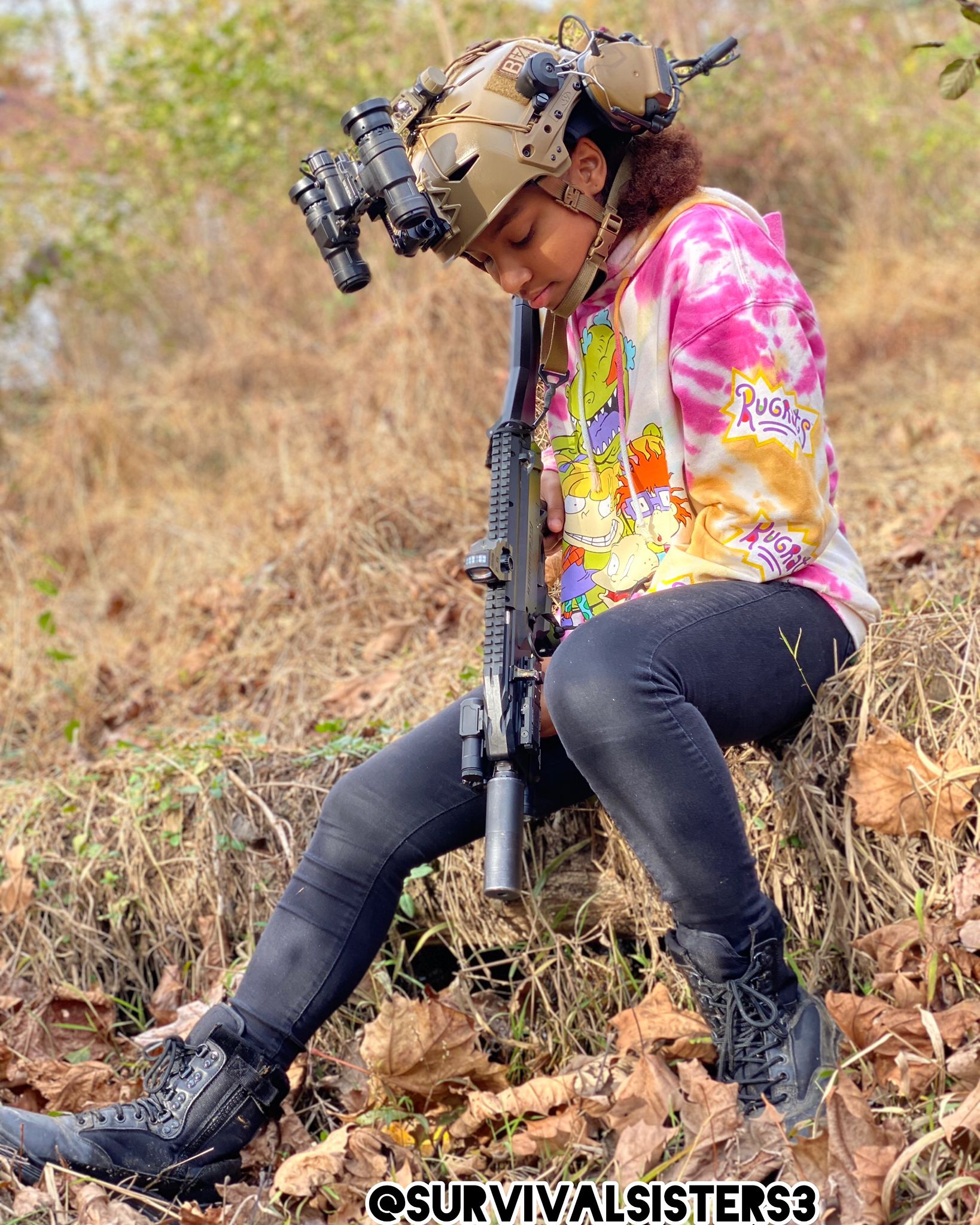
Metzl isn’t surprised that gun manufacturers are reaching out to more diverse communities: after all, he says, their aim is simply to sell as many guns as possible. But it’s also important to bear in mind that half of America wouldn’t look at an image of a child shooting a gun and find it confronting or negative, he adds: “Half the people in this country would think that it’s a great thing that people should be armed at any age,” especially when those children are learning about gun safety.
This explains the popularity of media like Toys, Tools, Guns and Rules, a children’s book about gun safety written by prominent shooting enthusiast Julie Golob. With its bright colors and cover depicting a playground — as well as its coloring-in book accompaniment — it’s a book that might shock people who have never been around guns, but speak to parents who know their kids will probably come across a firearm in everyday life and worry about how they might deal with that eventuality.
The price of freedom and when freedom has a price
Tacticool Girlfriend is the alias of a gun influencer who doesn’t like to share too much about her identity. Her videos on YouTube (over 65,000 followers) and Instagram (just over 17,000 followers) feature her signature look: heavily made-up eyes just visible above a face mask and long, black hair, usually pictured standing against an patterned background, overlaid with pink lighting.
What we do know: she is a transgender woman of Asian descent and a millennial, who often shares left-wing memes. She lives in an urban environment somewhere in the US, although she doesn’t want to say exactly where. Her parents are liberals. She tells me she identifies as an anarchist, adding, “I could give you a bunch of hyphens and words and a million different ways to describe all the things I believe in, but I think it's much bigger than that. And ultimately, I just am a pretty anti-authoritarian person.”
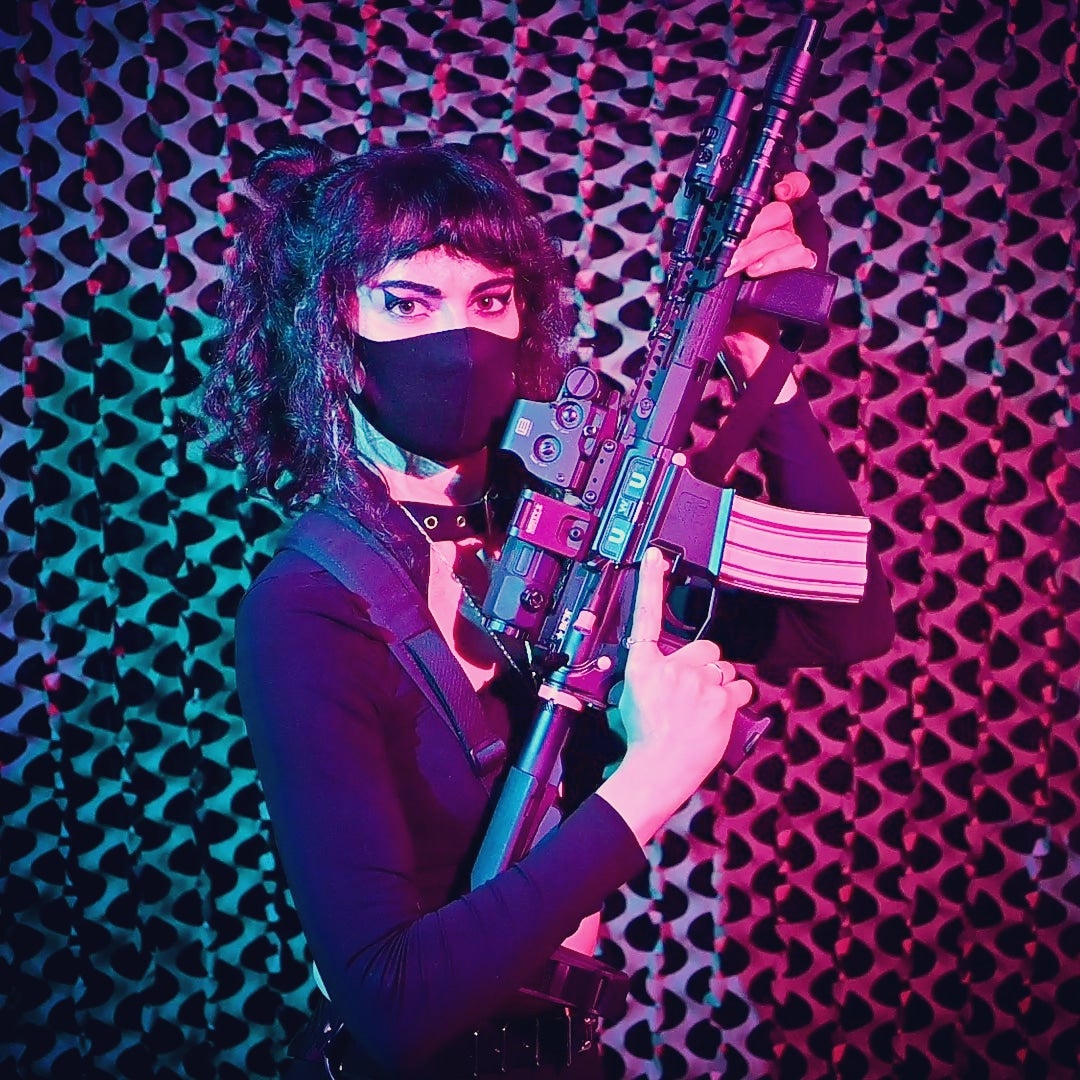
TGF, as she also sometimes calls herself, says she “actually grew up in a very anti-gun household.” Her father is a war refugee, who hates guns partly because of his own experiences and partly because “he also sees what gun owners in this country typically are and what they stand for, and he does not like that.” TG’s initial interest in firearms was because of her fascination with antiques and collectibles, “and then it wasn't until 2016-ish that I started to kind of look at firearms from less of an interest [perspective] and more as an application for defense. I started to more seriously consider my own self-defense, and just was worrying about defending myself, especially as the political climate started to really polarize and become a lot more intense.”
TGF’s videos are diverse, featuring tips on how and where to conceal-carry your gun (ranging from how to store them in shorts to how to carry them subtly on the inner thigh in specially made underwear) right up to how best to fire automatic weapons. But she never wanted to be a well-known personality — hence the masks.
She describes herself as a private person who found it hard to break into the gun community, and felt a responsibility to share tips with other people who might need them, especially trans people. She says she’s heard from a lot of people — mainly minorities — who had never considered owning a gun until Trump won the 2024 election. Now, they want to get up to speed on how to handle a handgun, a rifle, an AR-15.
TGF has been overwhelmed by the popularity of her channel, so much so that she stopped uploading content onto YouTube a year ago and retreated to the relative privacy of her less popular Instagram account. However, she has made some friends through the firearms influencer community, one of whom invited her to a shooting competition. There, she found that people took a “refreshing” approach to her, embracing her with open arms. It’s beyond what she was expecting, as someone who doesn’t fit the traditional gun owner profile. She now goes regularly.
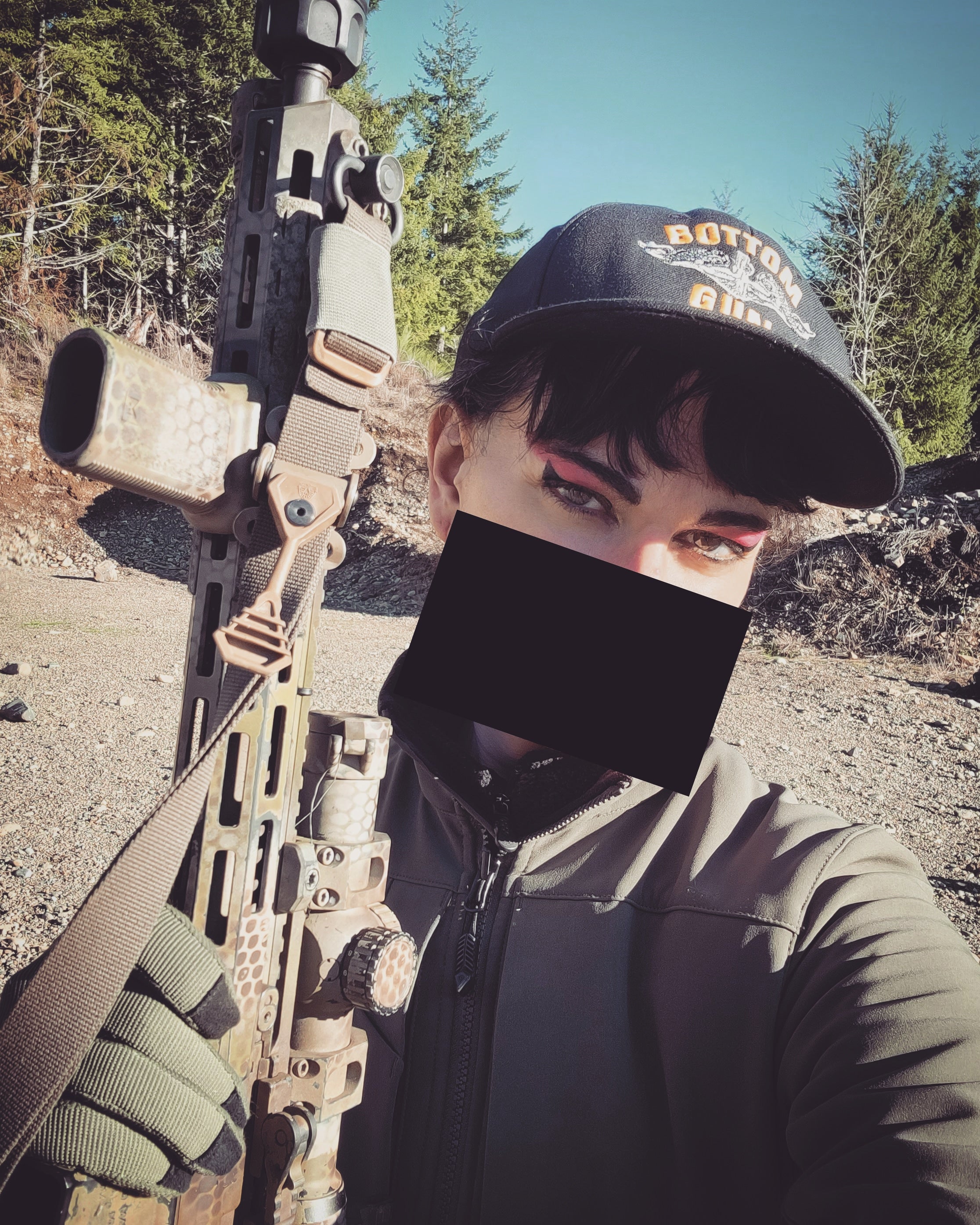
“I don’t moralize the existence of guns,” she says. “They are a tool… If I could snap my fingers and make all the guns in the world disappear, I probably would.”
However, we have to be realistic about where we are as a society, she notes, saying: “If we enact gun control, are we going to dismantle the military and police? Because if not, that's not really gun control, that's monopolization of violence. And so as long as there are guns, I would prefer that people be empowered and prioritize people who are the least empowered, the most disenfranchised parts of society. Those should be the last people to ever be disarmed, in my opinion.”
When the NRA is silent
“The appeal to Black Lives Matter, the appeal after the Pulse nightclub shooting that LGBTQ communities really need to arm themselves, is really interesting,” says legal scholar and Second Amendment expert Prof. Mary Anne Franks.
“And the idea that women need to arm themselves is really interesting. Having done a lot of work on domestic violence and women who fight back and what it means for the law, this is something that I keep wanting to scream about every time we come across it: that when women actually do use guns to protect themselves, no one comes to their defense. Not the NRA, not anybody... It is such a bait-and-switch.”
Consider the case of Philando Castile, Franks adds. “Law-abiding gun owner, right? Goes to show his concealed-carry gun. He's literally the ideal gun owner. Shot dead by a cop because it's a Black man who's reaching for something. And the NRA said nothing.”
Franks, who is of white and Asian descent, grew up in Arkansas, and was raised in an evangelical southern Baptist church. She says some facets of gun culture remind her of fundamentalist religion. She especially has little time for “Constitutional fundamentalists,” i.e. people who use the Constitution as a reason to say that there should be no gun control. That argument simply uses the Constitution as a foil, she believes.
“It gives you an excuse to say: ‘Well, I'm not just being selfish and wanting to have things my way. I have a document that is revered and has a long history,” says Franks. “And so it's not me who wants to be able to bring AK-47’s into kindergartens. It's the Founding Fathers who want to do that’.”
It’s important to underline, however, that there is such a thing as good gun culture, Franks adds. For instance, in Montana, “you put on the outside of your house where your weapons are located, you tell them how much ammunition you have,” she says, “because if there's ever a fire, that's something that the firefighters need to know about, like, where it's stored. It's a totally different culture, and it's an actually incredibly responsible culture. But that gets completely conflated with someone who's in the middle of New York City who says: Well, I have to be able to clean my gun in my second-floor apartment, even if that runs the risk of shooting through to someone.”
The problem, as Franks sees it, is that “Americans are so fearful of everything. And the irony is that the people with the most power, the most privileges, the most security, they're the most scared. They keep needing more and more security.”
A Daniel Defense commercial that was banned from running during the 2014 Super Bowl because of NBA rules is now viewable on the manufacturer’s website, and displays how gun marketers have long promoted the idea that American society has an inherent undercurrent of threat.
In the video, a white suburban man pulls into a driveway in a quiet neighborhood, picks up the newspaper from his front yard and walks into his house. Inside, his immaculately made-up wife turns to greet him with a smile. As they embrace, a baby monitor goes off, and the couple set off up the stairs to the nursery. There, Dad picks up their months-old baby, who is dressed head-to-toe in pink and laid out on a sweet purple blanket.
She smiles as she sees her father, and the whole family embraces, each parent delicately holding a chubby infant arm. Immediately, an image of an assault rifle appears onscreen and the commercial comes to an abrupt end with the tagline “Defending your nation, defending your home.” It is a gut-punch of a tonal shift, clearly designed to suggest that even during the most innocent and wholesome family moments, terrible possibilities lie in wait.
Preparing for a civil war
Mary Anne Franks considers that people who think there is a genuine need for guns have given up on the idea of society as a concept — and maybe there’s something in that. “It really took quite a lot to get me to the point of saying: Do I think that civil war is actually imminent and likely in this country? The last month has made me think that the answer to that is yes,” she says.
Franks has been particularly alarmed by reports of ICE agents in plainclothes taking people off the streets or turning up at people’s homes in the middle of the night and bundling them into vans without showing any kind of official ID.
“A woman has already [allegedly] been sexually assaulted by a man presenting, but pretending to be an ICE agent,” she says. “He told her: ‘If you don't comply with me, I will have you deported.’ And no, he wasn't in any way affiliated with ICE, but now you've created a completely lawless world in which she thought he could have been.”
The case that Franks is referring to happened in Brooklyn, but reports suggest that ICE impersonations during crimes are going up. “This is the chaos that I'm really afraid of,” she adds. “And everybody's got guns. So I'm very, very worried.”
Having never wanted to personally own a firearm, and having dedicated much of her career to publicly advocating for gun control, Franks has come to realize that she herself has been changed by the past few weeks.
“I will say candidly — and it makes me feel very awful — that for the first time in my life, I have considered getting a gun,” she says, “because I've been threatened enough in the last month and a half, including by people who are within the government, to think: OK, actually, I don't know how I would defend myself if the government tries to illegally break down my door and tries to haul me away to a deportation camp.”

Fred Thrasher recently had a group of women from Scandinavia come out to visit him and his family. None of them had ever shot a gun before. Before they set out on a day of activities, he says, one of the women asked him and his daughter: “Would you say that Scandinavians are free?”
Thrasher thinks that question is best answered through actions, not words. “I said: Come down and shoot with us,” he says. “And after you come down and shoot with us, you let me know what you think.” He thinks that every woman deserves to feel she’s in charge of her own space, invulnerable to violent advances.
Nicole Hockley, from Sandy Hook Promise, says she’s all for people owning guns legally and using them for sport, but that manufacturers stepping up their efforts to sell to children — such as through the development of the “JR-15,” a child-sized AR-15 assault rifle made by a company that markets itself with skull-and-cross-bone images with pacifiers and pigtails —have disturbed her.
In general, she’s also noticed that gun manufacturers have recently been taking a more “fear and anger” based approach to marketing in recent years, even as they also focus on patriotism. Sandy Hook Promise’s research also shows that firearms for adults are advertised to children in the U.S. on social media “every day”.
“My background's in marketing, and I would love to speak to some of these brand marketers or social media influencers [for whom] this is how they make their money and just say: Are you morally and ethically OK with this?” she says.
For all their patriotic rhetoric, she doesn’t recognize the America portrayed by so many of these firearm manufacturers.
After all, she asks, “how can we be the land of the free and the home of the brave if the only way we feel free is by having a gun?”
Trump threatens stadium deal for Washington Commanders over Redskins name
PHOTO ESSAY: A Texas town's residents stay inside -- even when they need medical care
Huge Oregon wildfire could become ‘megafire’ after blaze covers 95,000 acres
Trump ‘named twice’ to FBI by Epstein accuser as he peddles Obama conspiracy: Live
Woman describes moment husband was killed in front of her while she had MRI scan
JD Vance flew to Montana for secret meeting with Rupert Murdoch and Fox News execs
